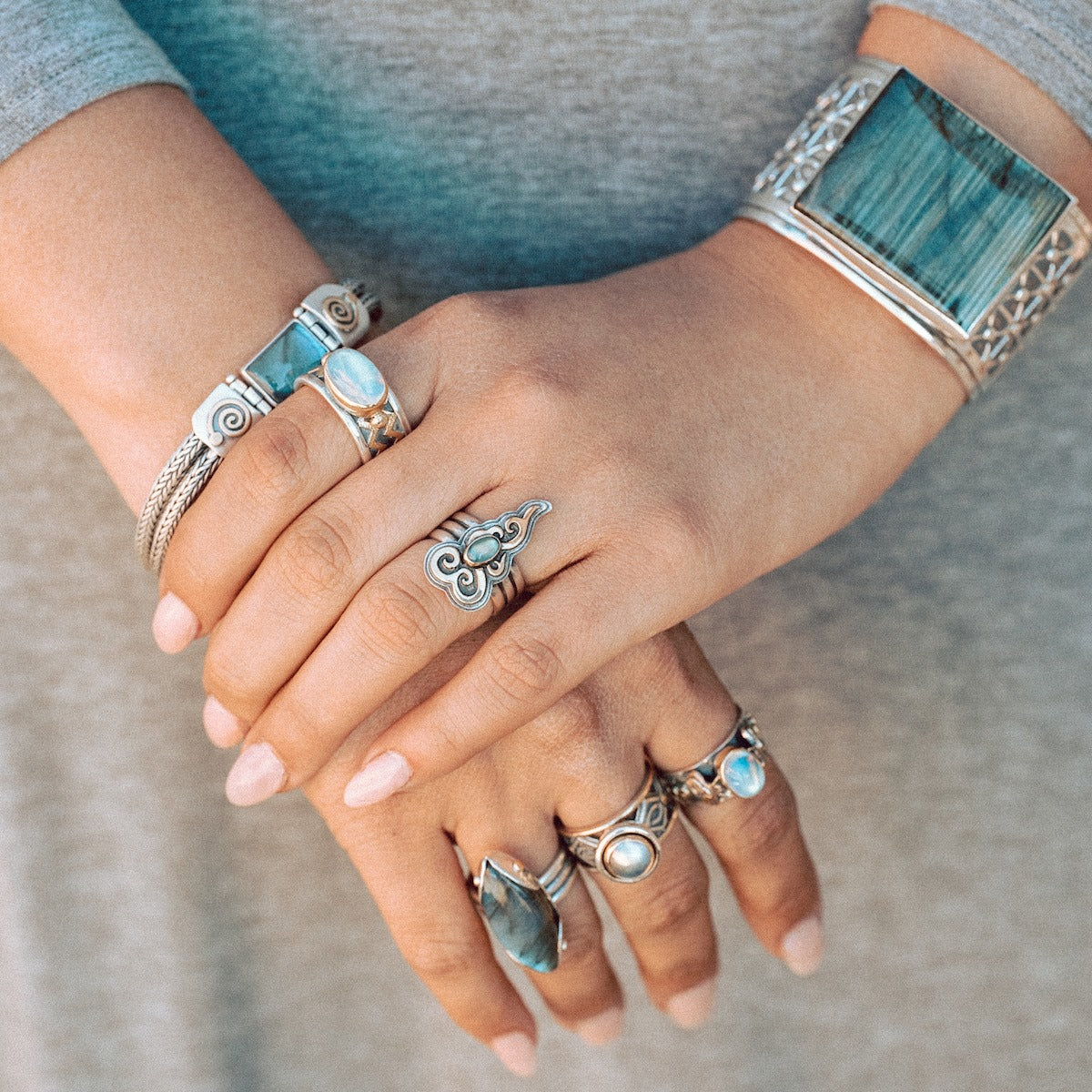Our Gemstones
What Is A Fair Trade Gem? Of all the colored gems that appear in the jewelry case, anywhere from 75% to 90% come from holdings that small scale miners dig with a shovel and pick. What typically happens is that dealers purchase this rough (unpolished gemstone still in its matrix) and sell the material to others, who export it to cutting centers around the world. This may then be sold to a wholesaler who presents the gem at a trade show. All these steps, and the enormous variety of locations from which various gems may be found, make it difficult to trace a particular stone back to it’s source. For all but a very few in the jewelry sector, the primary consideration in all these transactions is to buy at the lowest possible price and sell at the highest price. The key issue in “fair trade” gemstones is assuring that there’s real, better than average, economic benefit for the small community where the gem is mined. In the ideal world, a fair trade gem would need to work within a set of principles and on the ground standards that assure ethical working conditions and environmental safeguards. These criteria would be monitored by an independent third party. Ideally, the local economy where the gem is mined, would benefit from polishing operations. The entire supply chain would be completely traceable. However, this ideal scenario does not exist. Instead, there is no third party monitoring and we have has elements of the fair trade ideal in three different frameworks. Current Fair Trade Gem Sources The first group are co-ops or associations of artisan small scale miners (ASM). The challenge is that small scale miners are generally not organized into cohesive communities to sell product as “ethically sourced.” Often ASM are poor and without access to market or polishing operations. One example of an organized group which is working is the Tanzania Women Miners Association (TAWOMA). However, because they do not have representation in the US or EU, sourcing can be difficult. Jewelers are not at ease purchasing gems sight unseen, and international shipping can be expensive. The second group offering fair trade gems are companies which created their own fair trade principles and standards. Columbia Gems has pioneered this process at a ruby deposit in Malawi, where they work with small scale miners and provide schooling and many other benefits. Their cutting is done in China and supervised carefully. A second example of this type of company is Ruby Fair, which sources out of a remote village in Tanzania. The third option to find ethically sourced gems are individuals who contact the artisanal miners directly and develop relationships that benefit their people and villages based upon a fair trade ethos. They personally finance exploration and shepherd the rough to cut through to a factory which they know is ethical. One person who does this, who I have known and have been buying from for almost twenty years, is Guy Clutterbuck. Most of the gems offered on Celticjewelry.com are on the lower end of the price range and are not traceable from mine to market. However, if you would like a fair trade sapphire, emerald, aquamarine or ruby in one of our pieces, we can source it for you.
Trending Now
- $161.00
$161.00- $161.00
- Unit price
- per
- $319.00
- $319.00
- Unit price
- per
- $103.00
- $103.00
- Unit price
- per
- $427.00
- $427.00
- Unit price
- per
- $103.00
$103.00- $103.00
- Unit price
- per
- From $780.00
- From $780.00
- Unit price
- per
- $389.00
- $389.00
- Unit price
- per
- $211.00
- $211.00
- Unit price
- per
- Choosing a selection results in a full page refresh.

